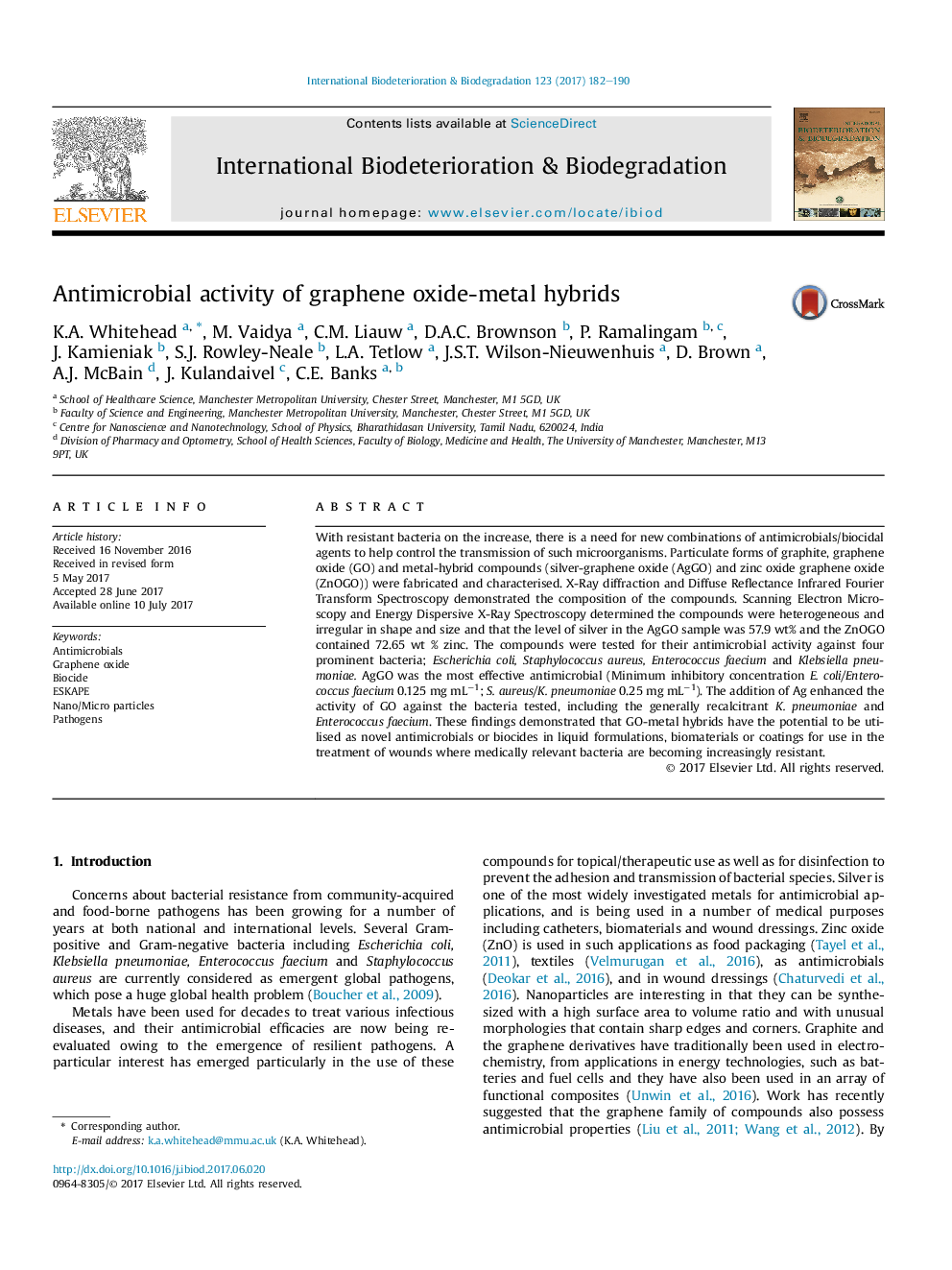| Article ID | Journal | Published Year | Pages | File Type |
|---|---|---|---|---|
| 5740266 | International Biodeterioration & Biodegradation | 2017 | 9 Pages |
â¢Graphite, GO, AgGO and ZnOGO were fabricated and characterised.â¢AgGO was the most effective antimicrobial.â¢The addition of Ag enhanced the activity of GO.â¢AgGO demonstrated activity against K. pneumoniae and Enterococcus faecium.â¢GO-metal hybrids may be used as novel antimicrobials or biocides.
With resistant bacteria on the increase, there is a need for new combinations of antimicrobials/biocidal agents to help control the transmission of such microorganisms. Particulate forms of graphite, graphene oxide (GO) and metal-hybrid compounds (silver-graphene oxide (AgGO) and zinc oxide graphene oxide (ZnOGO)) were fabricated and characterised. X-Ray diffraction and Diffuse Reflectance Infrared Fourier Transform Spectroscopy demonstrated the composition of the compounds. Scanning Electron Microscopy and Energy Dispersive X-Ray Spectroscopy determined the compounds were heterogeneous and irregular in shape and size and that the level of silver in the AgGO sample was 57.9 wt% and the ZnOGO contained 72.65 wt % zinc. The compounds were tested for their antimicrobial activity against four prominent bacteria; Escherichia coli, Staphylococcus aureus, Enterococcus faecium and Klebsiella pneumoniae. AgGO was the most effective antimicrobial (Minimum inhibitory concentration E. coli/Enterococcus faecium 0.125 mg mLâ1; S. aureus/K. pneumoniae 0.25 mg mLâ1). The addition of Ag enhanced the activity of GO against the bacteria tested, including the generally recalcitrant K. pneumoniae and Enterococcus faecium. These findings demonstrated that GO-metal hybrids have the potential to be utilised as novel antimicrobials or biocides in liquid formulations, biomaterials or coatings for use in the treatment of wounds where medically relevant bacteria are becoming increasingly resistant.
